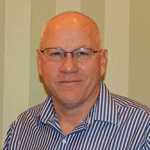
Marsh: Visual Analysis of Kernel Processing Versus Lab Analysis: A Need to Know
 Click to download presentation
Click to download presentation
Custom harvesters know that a high corn silage processing score (CSPS) is a top goal for dairy producers as they’re looking to get the most energy value out of today’s expensive feeds. The catch is that estimating CSPS in the field is not an easy or consistent task.
Dr. Brian Marsh, a farm advisor with the University of California Cooperative Extension, recently conducted research on this variation. He took silage samples cut at 13 and 19 mm and processed at 1, 1.5, 2.0, 2.5 and 3.0. All of the samples came from the same hybrid and had similar NDF and starch content.
The samples were sent to Dairyland Laboratories for an official corn silage processing score. Silage cut at 13 mm showed a 53.3 CSPS while that cut at 19 mm scored 44.2. When comparing processing, the wider the setting, the lower the processing score. As Marsh said, that was really no surprise. The processor settings had a much bigger impact on CSPS than chop length.
In addition, Marsh surveyed 11 individuals, including dairy producers, nutritionists, and custom harvesters, and have them give their visual rating of the CSPS. He had participants score the samples on a scale of 1 to 10, with 1 being poor processing, 5 being adequate and 10 being optimal.
According to Marsh, the visual assessments were “all over the place.” He said the only consistencies were in the extremes. Very poorly processed samples were always rated low and highly processed samples were always rated high. Everything in the middle was very random.
“It’s very subjective,” Marsh said. One person’s perception of processing can vary greatly from the next. This can happen on the same farm as a producer might have a very different assessment compared to the harvester or nutritionist.
That said, custom harvesters should use the off-season to get on the same page as their customers. Meet now to layout the forage plan and expectations.
Although it won’t give you instant results, Marsh does still recommend sending in samples to find the CSPS. Just remember that your sampling technique is also important. The small sample you send in needs to represent a very large pile, so you need to make sure you’re doing it right and getting a representative sample.
Finally, Marsh reminded producers that they can also control forage quality through packing density and fermentation. Focus on those areas to optimize your forage harvest.
| Category: |
Equipment Feed quality and nutrition Forage Foundations Forage harvesting |

